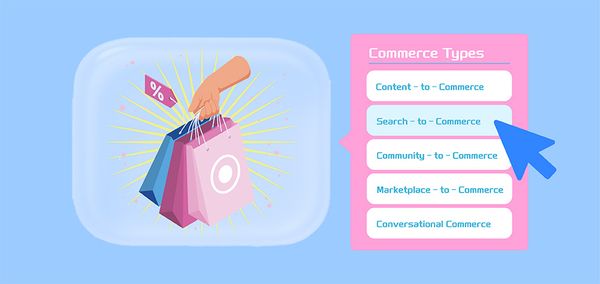Website Branding: Elements, Tips, and Examples

Website Branding is a term used to define the way in which your company or product is portrayed online. As we know, the online realm is a very crowded, noisy, and chaotic environment. In order for your target audience to find you, you must differentiate yourself from your competitors in a way that resonates with your target audience.
There are a number of ways to do this, but most of the time, it involves integrating your logo, key messaging, and images into your website. Finally, your website should speak to your customers in a way that appeals to them while also creating the expected credibility, authority, trust, and credibility you seek. This write-up will mention the elements of website branding, some tips you need to consider to make it better, and some examples.
7 Essential Elements of Website Branding
When it comes to making your website branding more effective, you must know some vital elements. With that being said, let's take a look at seven essential elements that you must know to create a site with top-tier branding.
1. User Experience
The first element you must know and focus on is the user experience. You must know about your customers and what they are looking for on the internet. Once you figure out the requirements of your potential customers, you need to take the essential steps and give them what they exactly want.
2. Being Transparent
Transparency matters a lot, so no matter how small or big your business size is, you must keep transparency with your customers. If you try to target multiple markets and fuse them together into your website, it will give your visitors a poor experience, and they may never visit again.
| Get Started Now to Grow Your Online Business with the Best AliExpress Dropshipping Tool - DSers! |
Moreover, you'll waste your time with unqualified leads and get no profit. Building a website that is transparent and provides everything that your visitors are looking for will filter unqualified leads and let you focus on potential customers.
3. Giving Social Proof
Website branding is essential in order to build trust with social proof. By including social proof on your website, you tell potential customers that others have used your product or service and been happy with the results. This can help to increase confidence in your brand and encourage more people to try your product or service.
4. Brand Story
Just like a well-reputed brand, your company also has a unique identity. As you make multiple efforts to build your brand, you must have an exciting story. There's a reason your brand exists, and you can share that reason or the story behind your brand's establishment with your target audience.
It would be an effective way to connect with them and even build your brand reputation. You can create engaging stories and portray your brand imagery to attract customers.
5. An Easy-to-Follow Site Structure
Utilizing an easy-to-follow site structure is a key element of website branding. A well-organized website helps visitors find the information they need quickly and easily.
This, in turn, helps build trust and confidence in your brand. An easy-to-follow site structure also makes it easier for search engines to index your website, which can help improve your search engine rankings. So, if you want to improve your website branding, start by ensuring that your site structure is easy to follow.
6. Understand the Customer's Plight
As mentioned earlier, you must design your website as per your customer's needs because they only visit your website when they find what they're looking for. You need to show your customers that you understand their plight and how your brand can relieve them of their problems.
7. Consistent Branding
Customers may know about your brand even before they visit your site. There can be many possibilities behind that like they can drive past a physical location if you have one, come across a paid ad, or even open your social media handle. Hence, you must be consistent with your branding, whether you're spreading awareness online or offline.
5 Useful Tips for Website Branding
If you're just about to work on website branding, you must consider the following tips to make branding effective and do well than your competitors:
1. Design Your Logo Before Your Website
One of the best ways to improve your website's branding is to design your logo before you even create your website. A well-designed logo with fun typography can help establish a professional appearance and increase trustworthiness among potential customers. It can also be used as an identifying symbol on social media, email signatures, and other marketing materials.
There are many online resources available that will help you create a logo that reflects your brand identity and meets all of your specific requirements. Once you have designed a logo, make sure to save it in an appropriate format so you can use it throughout the entire project process.
Storing versioned versions of logos in different file formats will help keep track of changes as they're made. By taking these simple steps early on in the process, you'll ensure better branding for both your website and future projects.
2. Be Careful with the Colors
Colors are a compelling way to communicate your message and style to visitors. However, many people struggle to choose colors that work well together and make their site look cohesive. There are four main principles that can help you pick colors that will work well on your website: contrast, complementary color schemes, personality traits, and Associative Color Theory.
However, it would be better if you chose complementary colors. When two colors are placed side by side, they will create an effect called "complementary color harmony." This means that the two colors work together to produce a stronger effect than either would on its own. In addition, know your hex values!
RGB values (red, green, blue) may seem like enough information for most people, but not everyone is aware of what each digit represents. Hex values also give you additional flexibility when choosing Colors because they allow for 16 million different combinations instead of just three like in RGB mode.
3. Work on the Site's Layout
When visitors visit similar websites, they definitely observe similar patterns. So, if you're focused on website branding, you must find out the 'hot zones' of vision and readability of your website. By doing that, you'll be able to showcase your brand identity to the audience for a better understanding.
According to studies, people view websites from left to right and pay attention to the top-right corner. Therefore, it is important to place your branding elements in the most visible areas so that your customers can recognize your brand immediately.
4. Use the Right Visuals
Choosing the right visuals is one of the most critical aspects of designing a website. Your website's branding should be reflected in all that you do, from your logo and color scheme to your user interface and content. In order to create effective visual branding, it's important to understand how visuals can influence people's perceptions of a company or product. Visuals can affect people in many ways. For example:
- Visuals Can Influence How People Feel About Themselves
- Visuals Can Influence Our Decision-Making Processes
- Visualizations Increase The Efficiency Of Thinking
5. Mobile-friendly Website
Creating a mobile-friendly website is one of the most important steps you can take in order to improve your website's branding. A mobile-friendly site looks and feels more professional, modern, and up-to-date than an unresponsive or poorly designed site.
Additionally, it will help attract more customers from the growing market of online shoppers who use their smartphones and tablets as their main mode of internet access.
There are several factors you should consider when creating your mobile-friendly website:
- Make sure all content is accessible via a smartphone or tablet. This includes both text and images.
- Use simple fonts that are easy to read on small screens. You can also adjust font sizes based on device size preferences.
- Avoid excessive animations and Flash content; these features slow down browser performance and make websites difficult to navigate for those with disabilities.
- Check for compatibility issues between your web page design standards and popular devices such as smartphones, tablets, laptops, etc. If there are any problems loading pages or styles properly on different devices, make adjustments until everything loads correctly across all devices.
Examples of Website Branding
Website branding has been helpful to many businesses, and you'll get to know some renowned names that used this strategy to excel in the industry.
1. Headspace
The first example we have here is Headspace. Headspace is known for its popular meditation apps and for gaining popularity among people. Now, coming to the website branding part, the home page of their website clearly communicates with the visitor effectively as it utilizes all the colors. The yellow and orange palette shows calmness, and any visitor can connect to this part easily.
2. PayPal
As we're mentioning only successful brands, PayPal easily got the second spot on the list. This online payment platform comes with a highly user-friendly website, and the moment you enter it, you'll see a slideshow that displays the benefits of taking the service.
As the primary color of PayPal is blue, you'll find it everywhere, from the "Sign Up" button to drop-down menu options. The blue color also conveys credibility and being trustworthy.
3. Discord
Discord is a popular website that allows users to chat and voice chat with others using an app on their smartphone. It has a sleek, modern design and offers many features that are unique compared to other online communication platforms. The website focuses highly on website branding, as it includes the use of high-quality graphics, striking typography, and intuitive navigation menus.
These elements help give Discord a distinct look and feel that sets it apart from other websites. Additionally, Discord's team takes great care in creating engaging content - from blog posts to video tutorials - that makes the site even more appealing to users.
4. Qualio
Qualio is a quality management system that helps businesses to track daily tasks. The platform is highly popular among businesses active in the medical and life science fields. Qualio focuses on using light colors on its homepage so that visitors can feel relaxed and scroll through the content with ease.
The website's primary color is purple, and you'll also see a few shades of navy blue and royal blue. In addition, the website offers curved borders that separate sections. This palette is complementary to the site's colors and helps to make them more vibrant.
5. Spotify
Music lovers worldwide are well-aware of Spotify, and the way this platform keeps every function in sync with its personality is commendable. If you look at the website, you'll see the touch of professionalism, which automatically makes the platform credible. The moment you visit its website, you'll see a slideshow of the latest stories heating up the creative industry. The rest of the website shows a variety of colors, and all of them are consistent with the website's theme.
Conclusion
A website's color palette, fonts, and overall UI play a vital role in enhancing user experience. One of the most effective ways through which your website would be able to keep visitors engaged is website branding.
With the elements, tips, and examples mentioned above, you can clearly see the importance of website branding. However, if you want to read more about eCommerce tips and Dropshipping, you can read the blogs on DSers' blog page.













 Company
Company
 Why Choose DSers
Why Choose DSers
 Blog
Blog
 Help Center
Help Center




 Live Chat
Live Chat